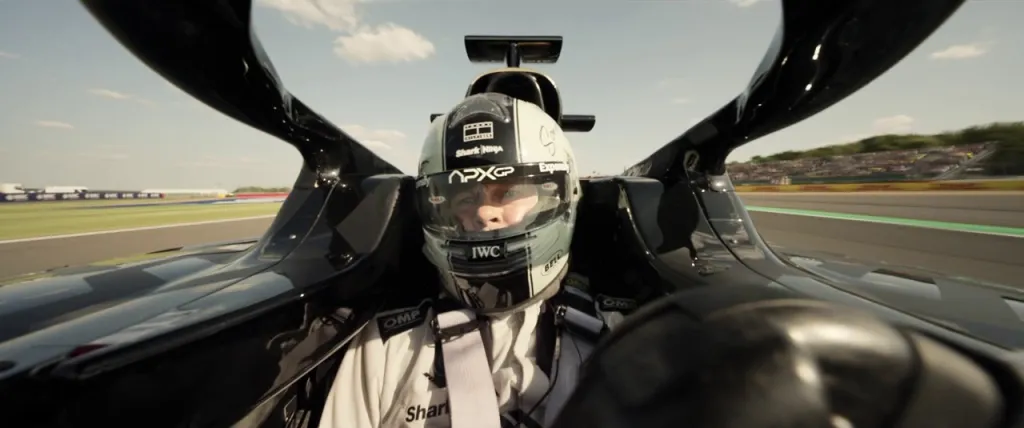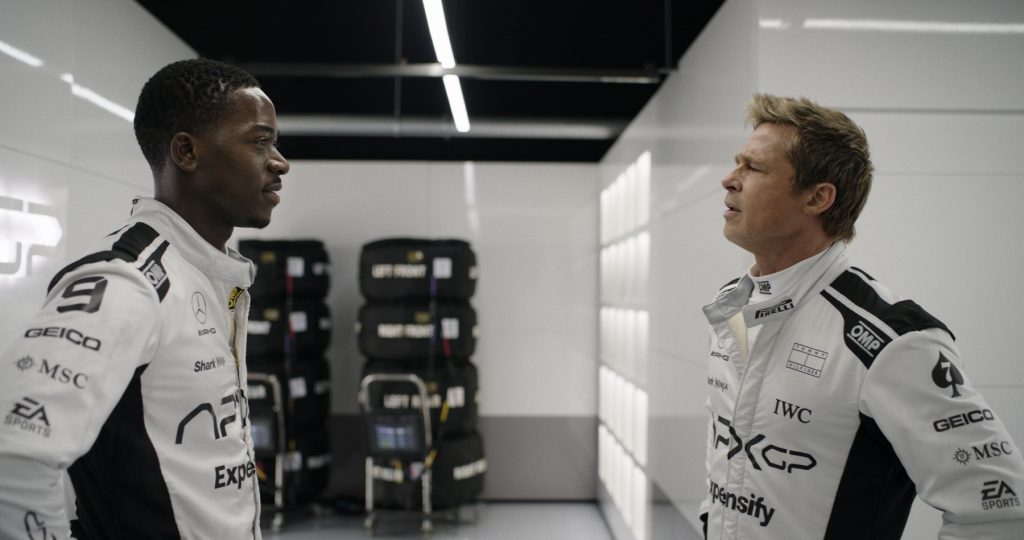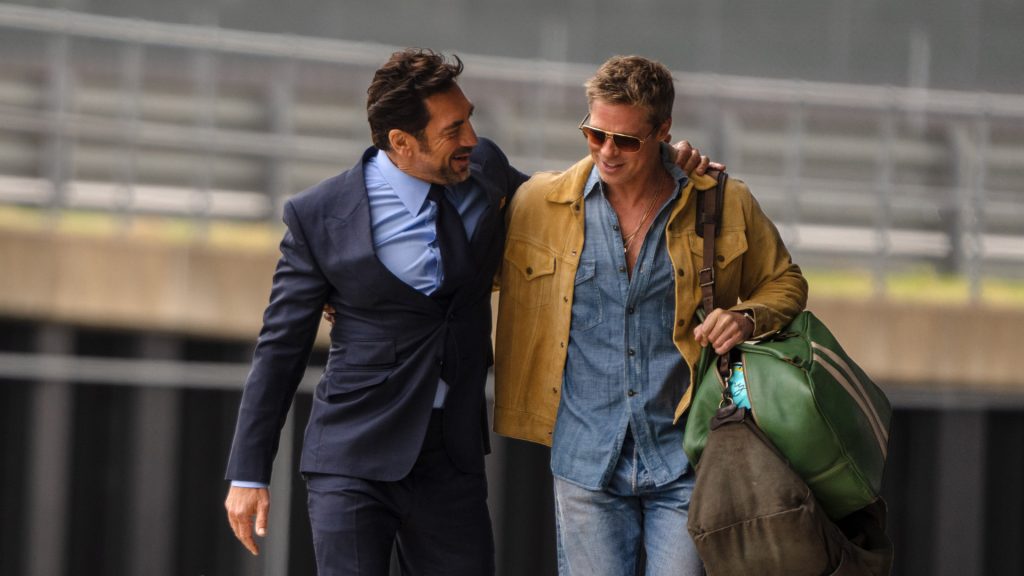
At its wheel, this film isn’t simply about engines roaring back to life—it’s about a man who once ruled the grid returning for one last lap, and a younger driver determined to carve his place where legends are born. Their pairing begins as an unlikely alliance—one holding experience like an anchor, the other charging forward with ambition like a storm. The film builds on that tension—legacy clashing with arrival—to explore how rivalry, respect, and the unforgiving rhythm of Formula 1 shape two men at opposite ends of their careers.
There are racing films, and then there are films that make speed feel like emotion. This one leans into the latter. The races don’t simply unfold; they pulse. Camera choreography sharpens rather than blurs every move—each overtaking maneuver, each micro-glance across the visor registers like punctuation. The editing is urgent yet precise, and the soundtrack thumps like a mechanical heartbeat, merging spectacle with structure.
Technically, the film recalls the kinetic precision of Rush, yet reframes that influence with its own clarity and commentary on modern F1’s digital choreography. It pays homage while refusing to imitate entirely—a respectful nod, not a mimic. The director leans on cinematic technique in the way Michael Mann might: with orchestration and control, but here, without stylization for its own sake—it’s a tool to keep you inside the moment.

Still, the film’s heartbeat remains human. The veteran driver doesn’t try to astonish; he simply inhabits his groove, conveying confidence not through bravado but through quiet presence. His younger counterpart radiates raw urgency—always leaning into the next moment, restless, combustible. Their chemistry isn’t forged with fiery dialogue, but in the ways they fill the frame opposite each other, how pressure sharpens each glance and gesture.
Yet, in aiming for clarity, the film sometimes slips into convention. Its trajectory—challenge, setback, training, confrontation—slots into a well-worn template. Supporting characters orbit rather than inhabit; motivations are sketched, not carved. Emotional stakes are streamlined for accessibility, which softens the personal resonance.
That said, honesty lingers in the details. A shared ritual before a late-night race. A terse technical exchange over radio. The choreography of pit stops—the choreography of survival. For newcomers, these moments serve as a bespoke orientation; for F1 aficionados, they signal a craftsman’s respect for the sport’s nuances.
At the heart of the narrative lies an unspoken meditation on aging, ambition, and legacy. The veteran embodies the weight—and relief—of a career well-worn; the younger man embodies hunger, yes, but also uncertainty. Their silent exchanges—looks held too long, gestures half-formed—speak to layered definers of masculinity, mentorship, and the anxieties of letting go or stepping up. These themes are conveyed without moralizing, honoring the viewer’s ability to feel without explanation.

This is a film built for the big screen. It knows the draw of spectacle—but it never forgets heart. General audiences may come for the rush; cinephiles for the craft. It’s a bridge between those who love engines and those attentive to frame-by-frame intention. In an era when streaming blurs us all into pixels, the film stirs something physical: asphalt, throttle, muscle memory.
In the end, the film doesn’t reinvent the wheel, but it polishes it until it glints under the floodlights, it delivers a visceral, sensory-enveloped experience. It thrives on speed’s emotion, grounded performances, and technical harmony. It may not astonish with originality—but it knows exactly what it is. And in that confidence, it earns its place among racing dramas that don’t just depict motion—but make the pulse of motion visible.
